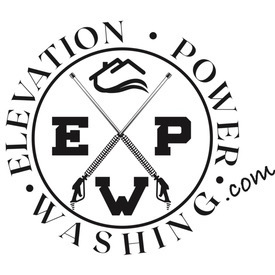Spring is prime time for outdoor upgrades in Lexington—think flower beds bursting with color, fresh mulch laid down neatly, and clean walkways that tie it all together. But one question homeowners often ask: “Should I pressure wash before mulching and landscaping or after?”
Truth is, timing matters. Pressure washing is a powerful cleaning tool, and doing it at the wrong point in your landscaping process could create more mess—or more work. Let’s break down the pros and cons of each approach so you can make the best call for your yard and sanity.
Table of Contents
Pros of Pressure Washing Before Mulching and Landscaping
Doing the dirty work first has its perks. Here’s why it makes sense for many:
- Cleaner prep space – Washing down siding, patios, walkways, or driveways before landscaping removes built-up dirt and mold, giving your landscaping a clean backdrop.
- No mulch blowout – Pressure washing after mulching can blow mulch everywhere. Doing it first avoids this entirely.
- Reveals problem areas – You might uncover spots that need attention (like cracked concrete or mildew-covered stone) before you add plants or mulch.
- Reduces double work – You won’t have to clean the same areas again after dirt and debris splash onto your newly mulched beds.
Best time to pressure wash? Late March to early April, before the mulch trucks arrive and while the pollen levels are beginning to settle.
Cons of Pressure Washing Before Mulching and Landscaping
There are a couple of things to watch out for:
- Temporary mess – Pressure washing can scatter debris onto your lawn or garden beds, which may require cleanup before laying mulch.
- May dirty current plants – If you already have some plantings in the ground, high-pressure spray can damage leaves or cause soil erosion.
- Pollen comeback – If you wash too early in the season, pollen might return and coat everything again.
Pros of Pressure Washing After Mulching and Landscaping
Some homeowners prefer to finish with the wash for a final polish. Here’s why:
- Everything looks brand new – A final wash can remove mulch dust, pollen, or soil that ended up on walkways, walls, or patios during planting.
- Instant curb appeal – You’ll get a photo-worthy finish right before guests arrive or your real estate photos are snapped.
Cons of Pressure Washing After Mulching and Landscaping
This option has more risk, especially for mulch beds:
- Mulch displacement – Even at lower pressures, water spray can move mulch around or wash it away.
- Waterlogged flower beds – Excessive water near new plantings may cause pooling or root stress.
- Soil erosion – If the landscape isn’t fully settled, you risk washing soil out of your beds.
What’s the Best Call?
If you want our advice:
Always pressure wash before mulching and major landscaping.
Here’s the simple sequence to follow:
- Schedule pressure washing for siding, roof, driveway, and patio surfaces (check out our House Washing and Concrete & Paver Cleaning services).
- Wait for the surface to dry, then clean up any leftover debris.
- Move forward with mulch, flowers, and garden edging.
This sequence keeps your mulch tidy and ensures your exterior shines.
Final Thoughts for Lexington Homeowners
Spring is short—and sweet—but planning the right sequence of outdoor maintenance makes a big difference. Pressure washing is more than just a cosmetic touch-up; it’s an essential part of protecting your investment and keeping your landscaping clean and crisp.
If you’re ready to clean up before spring landscaping, Elevation Power Washing has you covered. Our team uses a Safe Wash approach designed to clean thoroughly without damaging surfaces or plants.
Call (803) 636-6360
Visit elevationpowerwashing.com
Or find us on Google Maps
Let’s make your spring landscaping a fresh start—from the ground up.

